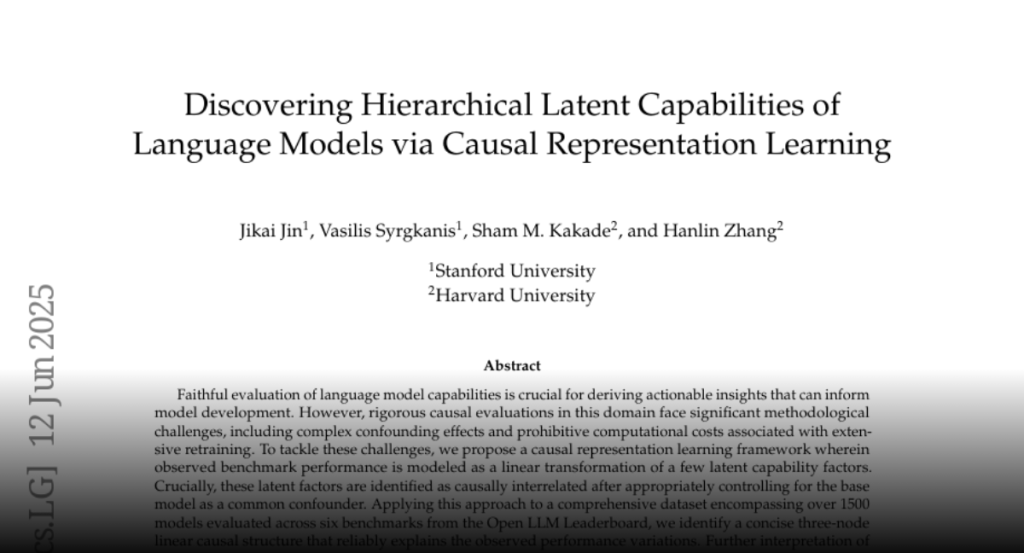A causal representation learning framework identifies a concise causal structure to explain performance variations in language models across benchmarks by controlling for base model variations.
Faithful evaluation of language model capabilities is crucial for deriving
actionable insights that can inform model development. However, rigorous causal
evaluations in this domain face significant methodological challenges,
including complex confounding effects and prohibitive computational costs
associated with extensive retraining. To tackle these challenges, we propose a
causal representation learning framework wherein observed benchmark performance
is modeled as a linear transformation of a few latent capability factors.
Crucially, these latent factors are identified as causally interrelated after
appropriately controlling for the base model as a common confounder. Applying
this approach to a comprehensive dataset encompassing over 1500 models
evaluated across six benchmarks from the Open LLM Leaderboard, we identify a
concise three-node linear causal structure that reliably explains the observed
performance variations. Further interpretation of this causal structure
provides substantial scientific insights beyond simple numerical rankings:
specifically, we reveal a clear causal direction starting from general
problem-solving capabilities, advancing through instruction-following
proficiency, and culminating in mathematical reasoning ability. Our results
underscore the essential role of carefully controlling base model variations
during evaluation, a step critical to accurately uncovering the underlying
causal relationships among latent model capabilities.

